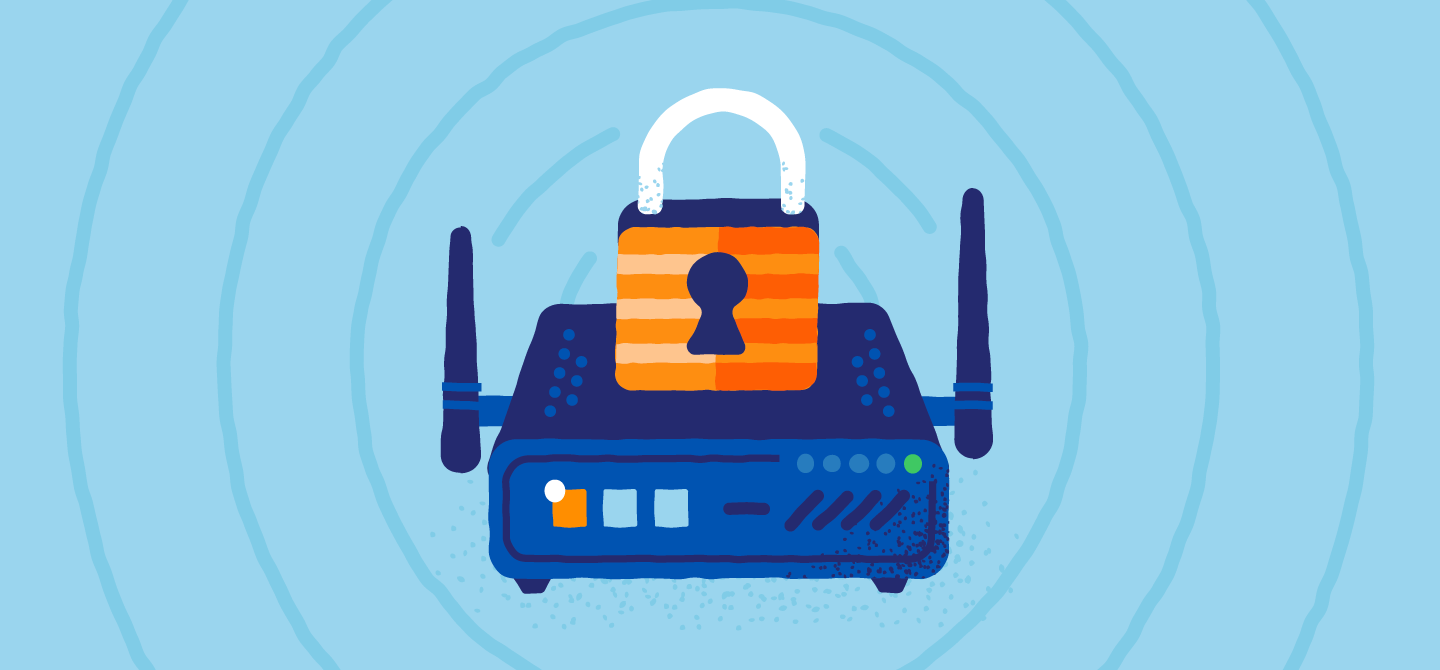Wireless networks are everywhere. Whether you’re at a local coffee shop, school or home, you likely have access to multiple wireless networks. But how do you know which ones are safe? Checking the network security settings can help you determine which guest Wi-Fi networks you can trust.
In 2024, nearly 40% of U.S. adults had their personal data exposed while using public Wi-Fi in cafes or restaurants. Hotels and libraries came in close behind as other hotspots for security risks. These numbers show how dangerous it can be to connect without knowing the type of protection in place.
Understanding Wi-Fi security settings — such as WPA and WPA2 — and what they mean can help keep you safe when connecting to unfamiliar networks.
Wi-Fi Security Protocols: From Weakest to Strongest
Compared to wired networks, wireless networks are more vulnerable to cyberattacks. If your router is unsecured, someone could access it, use it for illegal activities in your name, track your internet usage or even install malware. To prevent this, routers use security protocols that encrypt your data and protect your devices from intruders.
When you check a wireless network’s settings, you’ll notice several options. These protocols aren’t created equal, so it’s important to know which ones actually keep you safe. Here’s a list of the most common methods, ranked from most secure to least secure:
- WPA3
- WPA2-Enterprise
- WPA2-Personal
- WPA + AES
- WPA + TKIP
- WEP
- Open Network (no security)
The best choice depends on what your router and devices support. Older hardware may not recognize WPA3, but whenever possible, stick with WPA2 or WPA3. If you’re still on WEP or WPA, it’s time to upgrade your router or replace legacy devices, as these older protocols can leave your data exposed.

What Is WEP?
The first security protocol was named Wired Equivalent Privacy (WEP). It was the standard from 1999 to 2004. Although it was designed to protect against data breaches, it offered weak security and was hard to configure.
![]()
At the time, restrictions on cryptographic technology imports meant most manufacturers were using 64-bit encryption. This level of encryption is low compared to the 128-bit or 256-bit options available today.
WEP’s downfall came quickly once researchers exposed its weak foundation. It relied on static RC4 encryption keys, which attackers could crack by exploiting flaws like ARP replay and key reuse. These vulnerabilities allowed hackers to break into a WEP-protected network in minutes, pushing the industry toward stronger standards.
Ultimately, WEP was abandoned for a more advanced solution. Over time, wireless security has evolved to become stronger and easier to configure. Since the introduction of Wi-Fi, we’ve progressed from the WEP protocol to the WPA3 protocol.
WEP Pros and Cons
Although WEP marked the first attempt to secure Wi-Fi networks, its design flaws made it obsolete almost as soon as it was released. Here’s a quick look at its strengths and weaknesses:
| Pros | Cons |
|---|---|
| Provided a basic form of Wi-Fi security | Poor and confusing configuration |
| First model to secure Wi-Fi | Weak encryption (64-bit or 128-bit) |
| Vulnerable to common attacks (ARP replay, key reuse) | |
| Outdated and no longer safe to use |
Why Shouldn’t You Use WEP?
WEP should be used as a last resort. Attackers can easily exploit its weaknesses with freely available tools, sometimes cracking a WEP network in under five minutes.
If you’re connecting to Wi-Fi via WEP, the best move is to transition to WPA2 (or WPA3 if supported). Here’s what you should do:
- Verify that your hardware and software are compatible with WPA2 or WPA3.
- Place older WEP-only devices on a dedicated, restricted network.
- Use VPNs to add a layer of encryption if replacing WEP isn’t immediately possible.
- Plan phased hardware replacements to eliminate WEP completely.
What Is WPA?
![]()
To improve the functions of WEP, Wi-Fi Protected Access (WPA Wi-Fi) was created in 2003. This temporary enhancement still has relatively poor security but is easier to configure. WPA uses the Temporal Key Integrity Protocol (TKIP) for more secure encryption than WEP offers.
As the Wi-Fi Alliance made this transition to a more advanced protocol, they had to keep some of the same elements of WEP so older devices would still be compatible. Unfortunately, this means vulnerabilities are still present in the updated version of WPA, such as the Wi-Fi Protected Setup feature, which can be hacked relatively easily.
WPA Pros and Cons
Before choosing a Wi-Fi security method, consider the following benefits and drawbacks of WPA:
| Pros | Cons |
|---|---|
| Provides stronger security than WEP | Still has security vulnerabilities |
| Easier to configure than WEP | Backward compatibility with WEP devices weakened overall security |
| Supports TKIP data encryption | Now considered outdated and insecure |
What Is WPA2?
![]()
Wi-Fi Protected Access 2 (WPA2) was released in 2004 and provides a higher level of security than its predecessors. WPA2 Wi-Fi limits access without a network password and protects sensitive data using the Advanced Encryption Standard (AES) instead of TKIP.
It comes in two forms:
- WPA2-Personal for general use with a single password
- WPA2-Enterprise for individual passwords per device, suitable for corporations
WPA2 isn’t foolproof. Once inside the network, an attacker can compromise other connected devices, posing a threat to internal security within organizations. Also, if the router is compatible with WEP systems, WPA2 security is still vulnerable to WEP attacks. To prevent these attacks, disable WEP on your router and ensure your device isn’t using WEP..
WPA2 Pros and Cons
WPA2 is undoubtedly an improvement over WPA. Review the following benefits and drawbacks of this security method to make the most informed decision:
| Pros | Cons |
|---|---|
| Better security than WEP and WPA | Security vulnerabilities still exist |
| Easier to configure than WEP and WPA | Backward compatibility with WEP devices weakened overall protection |
| The model for government security standards | Still widely used and secure with AES, but outdated compared to WPA3 |
How to Patch WPA2 Vulnerabilities
Even though WPA2 is far more secure than its predecessors, it’s not invincible. Cybercriminals have discovered flaws — like the Key Reinstallation Attack (KRACK) — that can expose your data if your devices and router aren’t properly patched. But you can protect your network by keeping systems updated and tweaking a few critical settings.
Here are some common WPA2 vulnerabilities and how to fix them:
- KRACK: Patch devices and routers with the latest firmware updates provided by the manufacturer. Most vendors released fixes soon after KRACK was discovered.
- Brute force attacks on weak passwords: Use a strong, unique Wi-Fi password — at least 12 characters, including numbers, symbols and mixed-case letters. Avoid dictionary words.
- Outdated firmware exploits: Regularly check your router manufacturer’s website or mobile app for firmware updates. Many routers can be configured to update automatically.
- Weak router settings: Disable Wi-Fi Protected Setup (WPS), change the default administrator password and turn off unused features like remote management to reduce attack surfaces.
- Unpatched client devices (phones, laptops or IoT): Keep operating systems and apps updated. Vulnerabilities can be exploited from either end of the connection.
Firmware Resources
Most router makers — such as Netgear, TP-Link and Asus — publish firmware updates on their support sites. Some provide mobile apps that notify you when a new update is available. Applying these patches regularly is the most effective way to keep the WPA2 secure.
To safeguard your digital footprint:
- Always use WPA2-AES (not TKIP) for stronger encryption.
- Disable legacy protocols (WEP/WPA) entirely.
- Turn on automatic updates if supported.
- Schedule regular reboots after firmware upgrades to ensure patches take effect.
WPA vs. WPA2: Head-On Comparison
When comparing WPA vs. WPA2, WPA2 is the better option if your device can support it. Here’s how WPA2 improves on WPA:
| WPA | WPA2 | |
| Year it became available | 2003 | 2004 |
| Encryption method | Temporal Key Integrity Protocol (TKIP) | Advanced Encryption Standard (AES) |
| Security strength | Stronger than WEP, offers basic security | Stronger than WPA, offers increased security |
| Device support | Can support older software | Only compatible with newer software |
| Password length | Shorter password required | Longer password required |
| Business usage | No enterprise solutions | Has enterprise option |
| Processing power required | Minimal needed | Significant amount needed |
Some networks run in mixed mode to accommodate both WPA and WPA2 devices. While this can help older hardware stay connected, it weakens overall security because the network must support less secure WPA connections.
In mixed environments, it’s best to limit WPA devices to isolated segments, monitor them closely and plan to phase them out as soon as possible.
WPA2-Personal vs. WPA2-Enterprise
WPA2-Personal (also known as WPA2-PSK) uses a single shared password for all devices on the network. It’s easy to set up and ideal for home use or small offices. The drawback is that if the password is compromised, every device on the network becomes vulnerable.
WPA2-Enterprise is designed for larger organizations and advanced users who need stronger access control. Each user or device is assigned unique login credentials, which are often managed through a RADIUS server. This setup makes it much harder for attackers to gain access and allows administrators to revoke access for individual users without affecting the entire network.
| WPA2-Personal | WPA2-Enterprise | |
|---|---|---|
| Authentication | Single shared password (Pre-Shared Key/PSK) | Unique credentials via 802.1X + RADIUS |
| Setup complexity | Simple, fast setup | Requires RADIUS server or directory integration |
| Security level | Strong for homes and small offices with a strong password | Stronger — individual accounts reduce shared risk |
| Management | One password for all devices | Add/revoke users individually; detailed logging and auditing |
| Best use case | Home networks, small businesses | Enterprises, schools and organizations handling sensitive data |
How to Switch From WPA to WPA2
Most modern routers support WPA2, but you may need to manually adjust the settings in your router’s control panel. Before making the switch, ensure all your devices are WPA2-compatible, as very old hardware may only support WPA. After confirming compatibility, follow these steps to upgrade:
- Log in to your router’s admin panel. You can usually do this by typing the router’s IP address (such as 192.168.1.1) into your web browser.
- Enter your admin credentials. Use the unique username and password you set; if they’re still on default, change it immediately.
- Navigate to the Wireless Security or Wi-Fi Settings section in the control panel.
- Select WPA2 (preferably WPA2-AES) from the available security modes. Avoid using mixed WPA/WPA2 mixed mode if possible.
- Create a strong password for your Wi-Fi. It should be at least 12-16 characters, incorporating a mix of letters, numbers and symbols.
- Save settings and reboot your router to apply the changes.
- Reconnect all devices using the new WPA2 settings and password.
Troubleshooting tips:
- If a device can’t connect after the upgrade, check if it supports WPA2. For older hardware, update the device’s firmware or drivers.
- If the router only offers “WPA/WPA2 mixed mode,” select it temporarily, but plan to replace outdated devices soon.
- If you lose access to the admin panel after making changes, reset the router to factory settings and reconfigure it from scratch.
What Is WPA3?
![]()
The Wi-Fi Alliance released Wi-Fi Protected Access 3 (WPA3) after identifying flaws in WPA2. As the latest Wi-Fi security update, WPA3 offers stronger cryptography for extremely sensitive data markets and more reliable authentication.
WPA3 hardware is much easier to find today, but many older devices still don’t support it or only function in mixed mode. If you want full WPA3 security, you may need to upgrade older gear.
WPA3 Pros and Cons
WPA3 is more advanced than WPA and WPA2, but consider the following pros and cons before deciding:
| Pros | Cons |
|---|---|
| Advanced security beyond WPA2 | Limited device support and compatibility |
| Stronger protection against hackers | Higher cost for newer hardware |
| Improved user authentication | Not 100% hacker-proof |
| Replaces PSK with stronger handshake methods | |
| 256-bit encryption |
Invest in Wi-Fi Tools for Stronger Security
WPA3 is the latest Wi-Fi security protocol, but it still has some vulnerabilities. To improve protection against hackers and cyberattacks — and to remain anonymous on the internet — it’s smart to invest in additional Wi-Fi security features and encryption tools.
Some of these tools include a VPN, which hides your IP address from hackers, and private search engines like DuckDuckGo, which shield your online activity from third-party cookie trackers. These tools use Wi-Fi security protocols to encrypt sensitive information and prevent data breaches.
2025 Wi-Fi Security Threats and Updates
In 2025, WPA and WPA2 remain in use, but fresh penetration tests and vulnerability assessments show they’re still vulnerable if left unpatched. Known exploits like KRACK persist, and attackers continue using brute-force tools to break into weakly secured networks.
Vendors now release firmware updates faster to close these gaps, and many routers support automatic patching. Businesses are also adopting continuous monitoring and red-team testing to stay ahead of attackers.
For homes, the biggest risks come from outdated devices and poor password practices. Updating all hardware, disabling legacy modes and planning a move to WPA3 are the best ways to keep your Wi-Fi security future-ready.
Upgrade Your Wi-Fi With Panda Security
WPA2 should be your go-to option when deciding between WPA vs. WPA2. To further strengthen protection, upgrade your Wi-Fi security with the latest application for your routers, PCs and mobile devices. Doing this can prevent data theft and provide greater peace of mind when using public networks.
Plus, since Wi-Fi security is constantly changing, monitoring activity on your network is critical to keeping hackers out. Try a free Panda Security trial to safeguard your devices and improve your home’s security.
WPA vs. WPA2 FAQ
Whether you’re using a home Wi-Fi router or managing a corporate network, Wi-Fi security protocols ensure your data remains secure. Below are some commonly asked questions about WPA vs. WPA2 vs. WPA3.
How Do I Know What Protocol My Network Uses?
You can check your Wi-Fi protocol in your router’s admin panel, usually under Security or Wireless Security Mode. Most modern devices also display the connection type:
- On Windows, you can view it in the Wi-Fi network properties.
- On macOS, hold the Option key and click the Wi-Fi icon to see details.
If it shows WPA2 or WPA3, your network is on a secure standard. If you see WPA or WEP, your network is outdated and should be upgraded immediately.
What Is WPA2-Personal?
WPA2-Personal is a Wi-Fi security mode designed for home and small networks. It uses a shared password (pre-shared key) for authentication, making it easy to set up without a separate authentication server. It offers strong encryption with AES to protect your wireless connection from the most common attacks.
Is WPA/WPA2-Personal Secure?
WPA/WPA2–Personal can be secure, but with some caveats. WPA2–Personal is generally strong thanks to AES encryption and a shared password. If you use a complex, unique password, it’s tough for attackers to crack. WPA–Personal (the older version) is less secure and more vulnerable to attacks.
The biggest risk with WPA2-Personal is weak or reused passwords, so avoid a simple one like “password123.”
What Is the Weakness of WPA2?
If your router is compatible with the earlier version of WEP, WPA2 is vulnerable to cyberattacks. Disable WEP in your router settings to fix this problem. Another issue is that someone connected to a WPA2 network can attack other devices connected to the same network.
Should I Use WPA, WPA2 or WPA3?
WPA3 is the most recent Wi-Fi security protocol and offers more sophisticated encryption features than WPA2 and WEP. If your device or router supports it, WPA3 should be your preferred security option. Most devices are compatible with WPA2, making it the next best choice.
Is WPA2 Backward Compatible With WPA?
Yes, WPA2 is backward compatible with WPA, which allows it to function with older software. Using WPA and WPA2 together can enhance router security. WPA2 employs AES encryption, while WPA verifies users’ initial login credentials through pre-shared keys.
But be cautious when using these two systems simultaneously, as hackers can exploit the security flaws in WPA and access your data.
Can I Switch From WPA2 to WPA3?
Switching from WPA2 to WPA3 is possible but difficult because of WPA3’s stronger encryption standard. Adopting WPA3 requires updated hardware, which can be more expensive than sticking with WPA2 or other older models.






